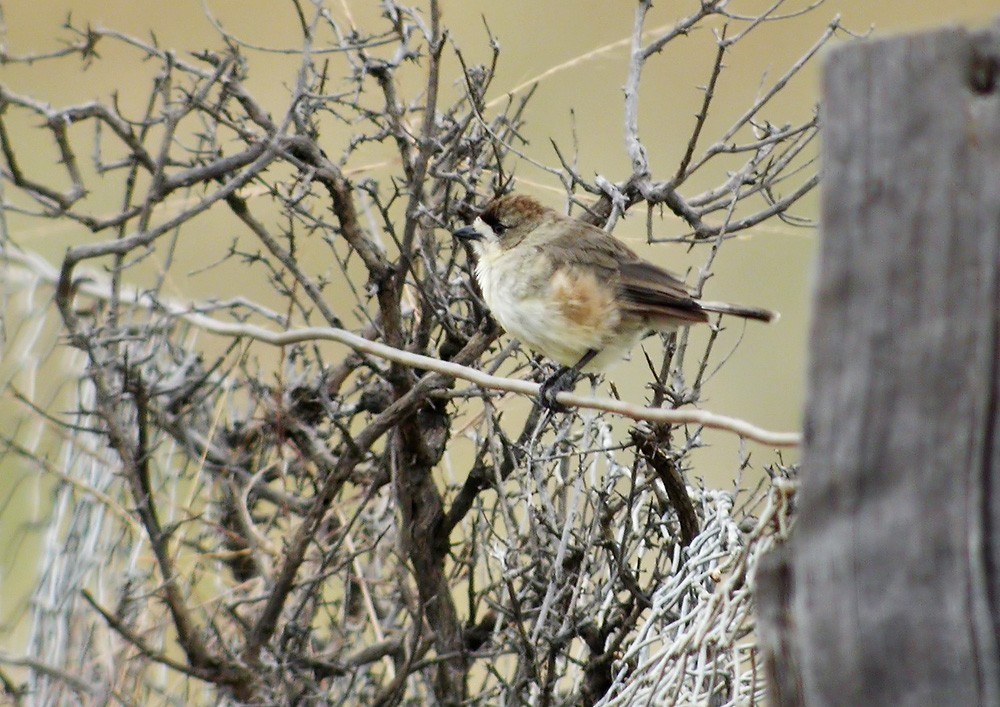Southern Whiteface
A species of Whitefaces Scientific name : Aphelocephala leucopsis Genus : Whitefaces
Southern Whiteface, A species of Whitefaces
Botanical name: Aphelocephala leucopsis
Genus: Whitefaces
Content
Description General Info
 Photo By Lars Petersson
Photo By Lars Petersson Description
The southern whiteface is a stocky thornbill-like bird with a brown dorsum, white belly, dark brown wings and a black tail with narrow white tip. A grey wash on the belly is sometimes present, along with a grey or rufous tinge to the flanks. This species displays the characteristic facial markings of the genus; a white band across the forehead, with a darker streak along the top edge. Adult birds are approximately 11.5 cm (4.5 in) in length with a cream coloured eye, grey legs and a stubby dark grey bill of finch-like appearance. Adults are sexually monomorphic, while juveniles are distinguishable due to a lack of black rear band on the face. Call is a rapid, noisy twittering "tchip-tchip-chiptchipt-chipt-chip" or "tzip-tzip-tziptzip" and a harsher "kzzurrk, kzzurrk-kzzurrk" in alarm. This species can be distinguished from other whiteface species by its somewhat duller appearance and lack of a breast band, which both the banded whiteface and chestnut-breasted whiteface possess. The southern whiteface is a polytypic species with two recognised races: A. l. leucopsis; the nominate race found throughout south-eastern and central Australia. This race varies in the degree of grey colouration on the flanks, becoming progressively paler with north-westerly distribution. The pale form was previously considered a separate race; whitei. A. l. castaneiventris; found in south Western Australia, this race is distinguishable by a rufous wash to its flanks. 
Size
13 cm
Nest Placement
Cavity
Feeding Habits
Southern Whiteface's diet consists mainly of arthropods, including insects and arachnids, complemented by seeds and leaves. They forage on the ground in open areas, using litter and herbs. Southern Whiteface glean food in small to large flocks, sometimes with mixed species, showcasing a communal, ground-based feeding behavior.
Habitat
The southern Whiteface typically resides in arid and semi-arid habitats, favoring woodlands and shrublands dominated by acacia and eucalyptus species, such as mulga and mallee. The understory is often composed of grasses, low shrubs, saltbush, and bluebush, as well as Eremophila. These birds also inhabit areas with cypress pine. The presence of tree holes is crucial for their nesting. Their habitat extends into coastal regions, inhabiting a variety of landscapes including hills, ranges, lowlands, plains, dunes, swales, and floodplains.
Dite type
Insectivorous
General Info
Feeding Habits
Bird food type
Distribution Area
The southern whiteface is endemic to Australia and typically inhabits arid open woodlands with a shrubby or grassy understory, as well as grass plains throughout much of the continents south. Not present in Tasmania or in coastal areas of the mainland, this species prefers Acacia woodlands, particularly those dominated by mulga and drought-resistant chenopod shrub species, including saltbush and bluebush. They are considered sedentary; however, atlas records indicate that individuals may move into wetter areas outside of their normal range during drought years. 
Species Status
Although locally common and currently listed on the IUCN Red List as of least concern, atlas records of southern whiteface have declined by 43% in recent years. The suitability of habitat for ground-foraging woodland species, such as the southern whiteface, is thought to depend on the variety of available ground substrates. As many types of ground cover are vulnerable to disturbance from fire (leaf litter, fallen branches), grazing (grass, herbs) and introduction of exotic plant species (open ground), the management of existing habitat has important conservation implications for this species. Understory disturbance by grazing and clearance of habitat for agriculture are currently listed as the main threats to southern whiteface. However, some studies suggest that mining operations may also impact negatively on the species, although the exact cause for their decline (e.g. habitat degradation, noise disturbance, exposure to pollutants) in mining areas is unknown. 

 Photo By Lars Petersson
Photo By Lars Petersson Scientific Classification
Phylum
Chordates Class
Birds Order
Perching birds Family
Australasian warblers Genus
Whitefaces Species
Southern Whiteface